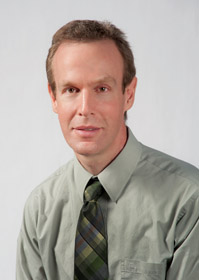 Several years ago, I wrote the poem “Cancer Dances” in a creative writing class. I was reflecting on the confusion that ensues when diagnosed with a serious cancer, and the journey that some take to death, which despite the struggle against it, sometimes proves inevitable.
Several years ago, I wrote the poem “Cancer Dances” in a creative writing class. I was reflecting on the confusion that ensues when diagnosed with a serious cancer, and the journey that some take to death, which despite the struggle against it, sometimes proves inevitable.
As oncologists, we do our best to care for our patients through all phases of their illness. Many times the goal is to optimize the chance that the person we’re treating will be cured and go on to live a long life free of recurrent cancer. Other times, we know that cure is impossible and that our patient will eventually succumb. In that case, the goal is to help the patient live as good a quality of life as possible for as long as possible.
Consider what happened to one of my patients, Larry, last year. (His name and details have been altered to keep anonymity). He was 48, outdoorsy and athletic, married with two teenage daughters. He’d had a melanoma removed from his chest the year before, but it spread to his liver and lungs, and despite our treatments, the cancer continued spreading. He was now rail thin, lost his appetite and often felt nauseated. He had constant aching in his chest and abdomen. Though he used to love hiking with his family, he was now unable to leave his home.
We enlisted hospice support for Larry, and they visited him and his family most days. He seemed reasonably comfortable, but distressed by his loss of independence and weakness. Eventually, he became increasingly confused, and tried to get out of bed by himself but would fall. He received medicine to help clear his mind, but was never fully lucid again. When he died, his wife told me that the family felt that Larry’s course of dying had been exceptionally traumatic for everyone.
Since June 2016, adults in California expected to live fewer than six months have the option of being in charge of both the timing and manner of their death, under the End of Life Option Act (ELOA). (The act was put on hold this May and June, but is currently back in force.) In the last year, more of my patients who know their situation is terminal are discussing this option with me. For most, it’s a hard decision.
The ELOA has a rigidly defined protocol to make sure this process is done legally and ethically. Patients must of their own initiative come to their attending doctors requesting to end their lives on their own terms. The doctor must advise the patient of the alternatives, such as palliative care with hospice support, and emphasize that it’s okay to reconsider anytime during the process. A consultation with a second doctor is required to confirm the prognosis and ensure the patient understands the implications. The patients must ask for Aid in Dying drugs, and repeat this request 15 or more days later, and a written request signed by two witnesses is also required.
Of course, doctors aren’t used to writing prescriptions for lethal medications, and many physicians have opted out of participating, feeling this violates the ethical imperatives of a physician. But if the doctor does agree, he/she writes a prescription for Aid in Dying drugs, this is sent to a participating pharmacy, and the patient picks up the prescription. Patients must ingest the medication themselves, though typically a support person is with the patient during this time. The patient will lose consciousness in a few minutes, and stop breathing, peacefully, a few minutes to a few hours later. Most of the time this goes smoothly.
Naturally, you want to live a life that’s vigorous, engaged, and fulfilling, as long as possible. But some day if you’re facing certain debility, discomfort, and the loss of independence as death approaches, you now have the choice to end your life sooner and on your own terms. For most, it’s a hard decision.
Cancer Dances
Our wait stretches to nine then ten,
But catapulted through a fog of panic
And ushered through a maze, hazy,
We arrive, expected, and wait again.
We know the diagnosis but the prognosis
We wait for holds all the meaning
And all the pain and none of the life
That now seems measured only by doses.
We wait in rooms, beds, horror.
We wade through torn People magazines.
We wait over nine or ten days for answers.
We arrive, expected, and wait no more.
But wait on death
Who waits beside.
I wait outside.
We time your breath.
Peter Brett, M.D., is a board-certified medical oncologist at Sutter Medical Group of the Redwoods in Santa Rosa, and affiliated with the Sutter Santa Rosa Regional Hospital. He’s been practicing oncology for more than 25 years. For more information, go to sutterpacific.org, or call (707) 521-7750.



